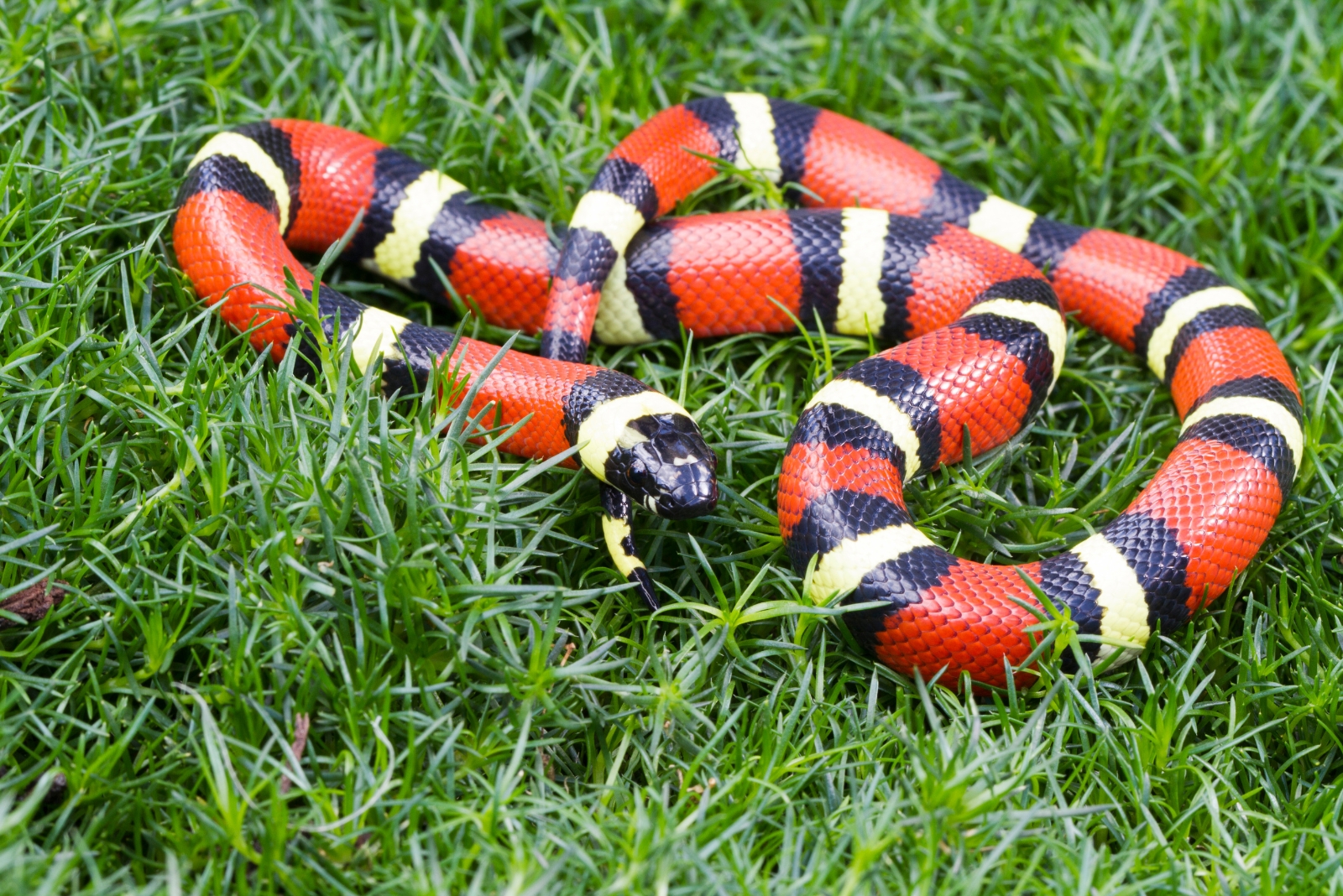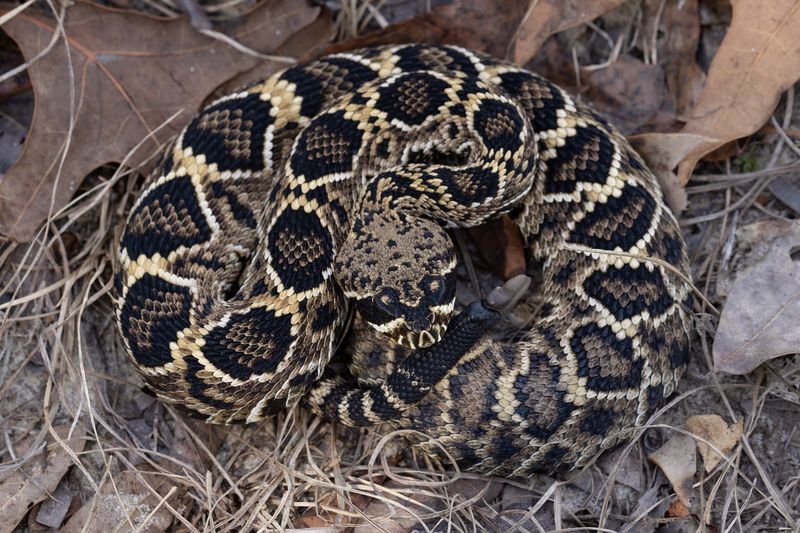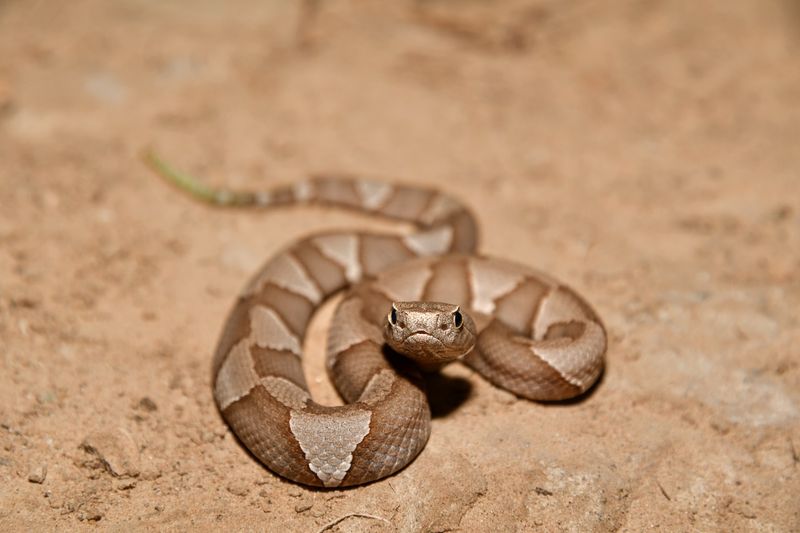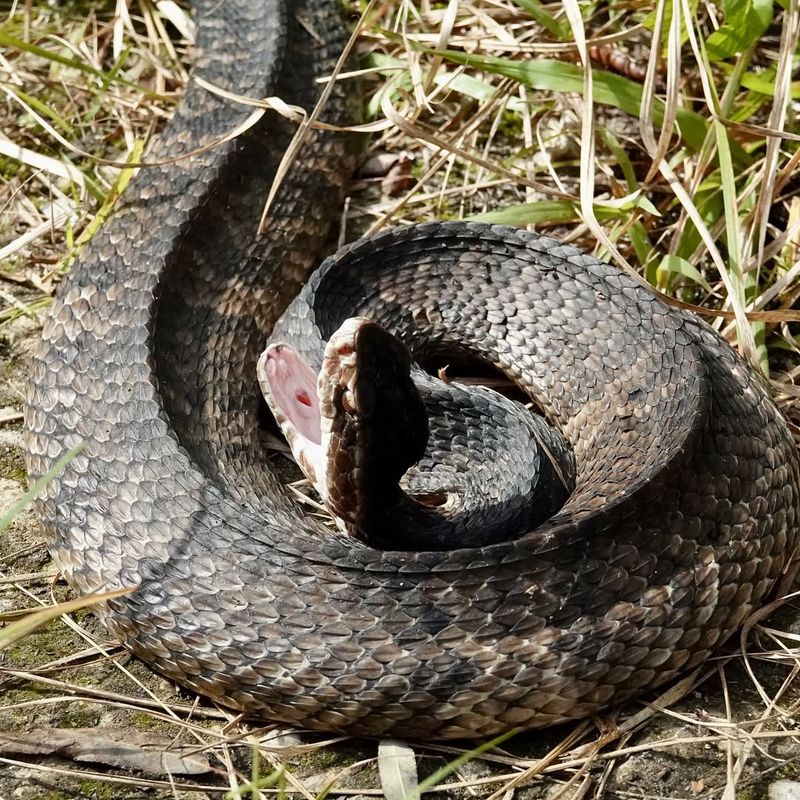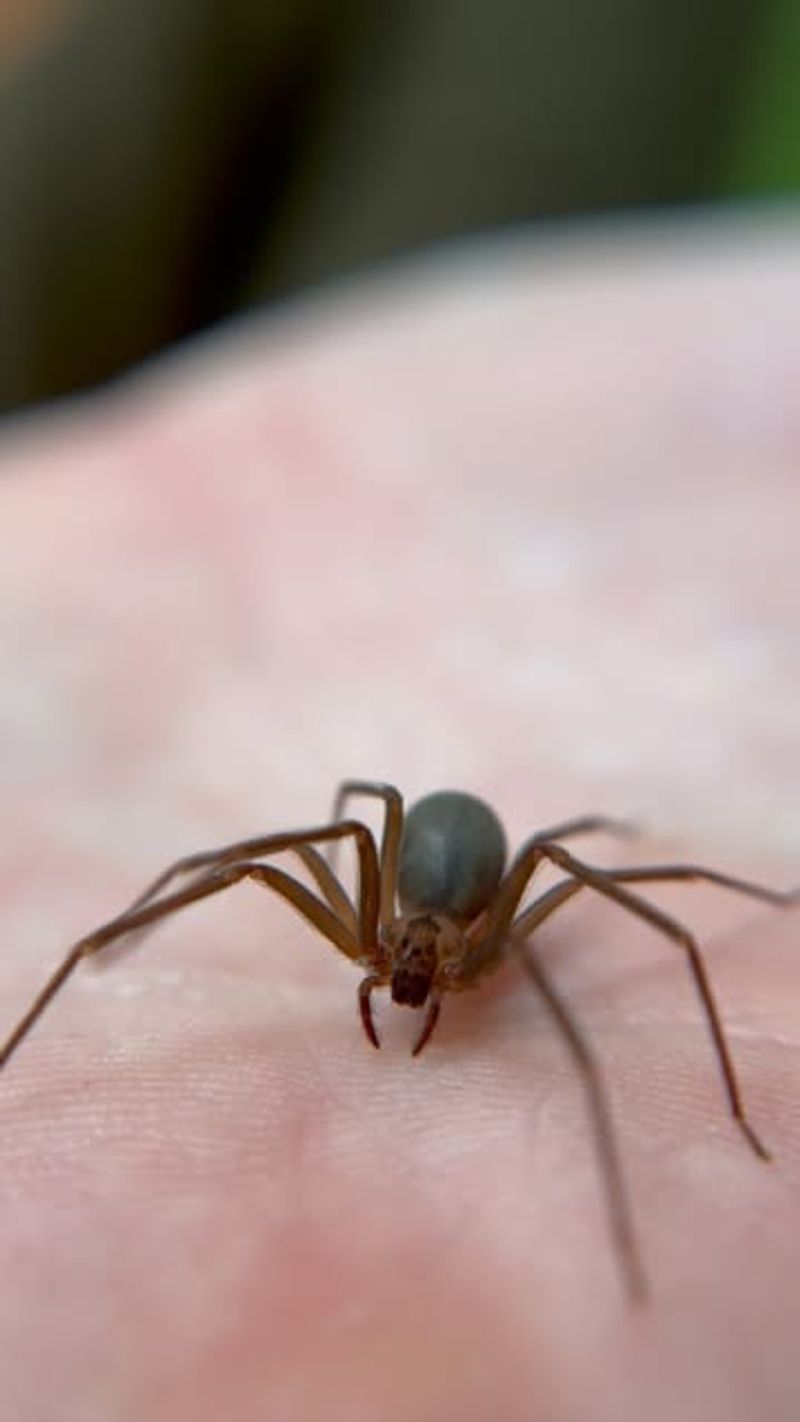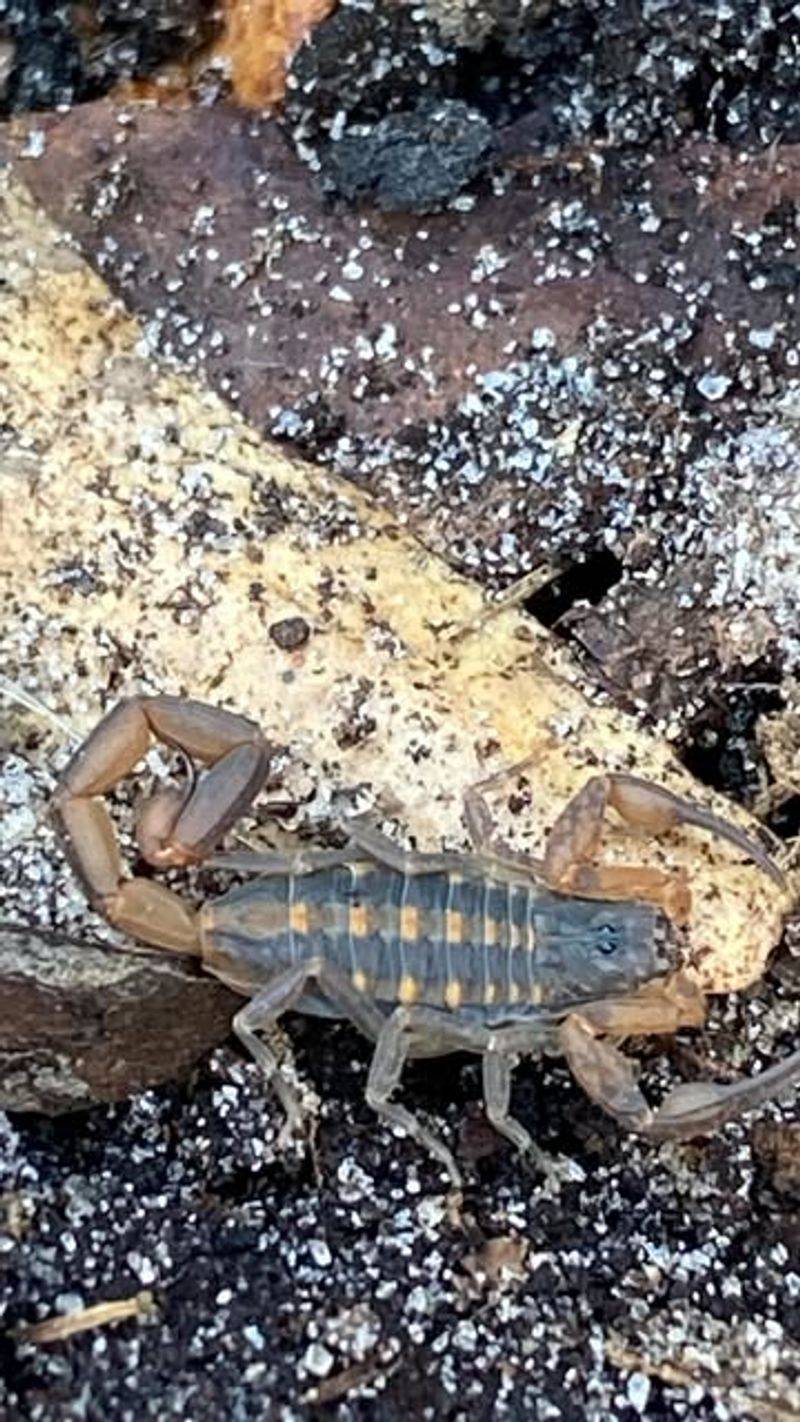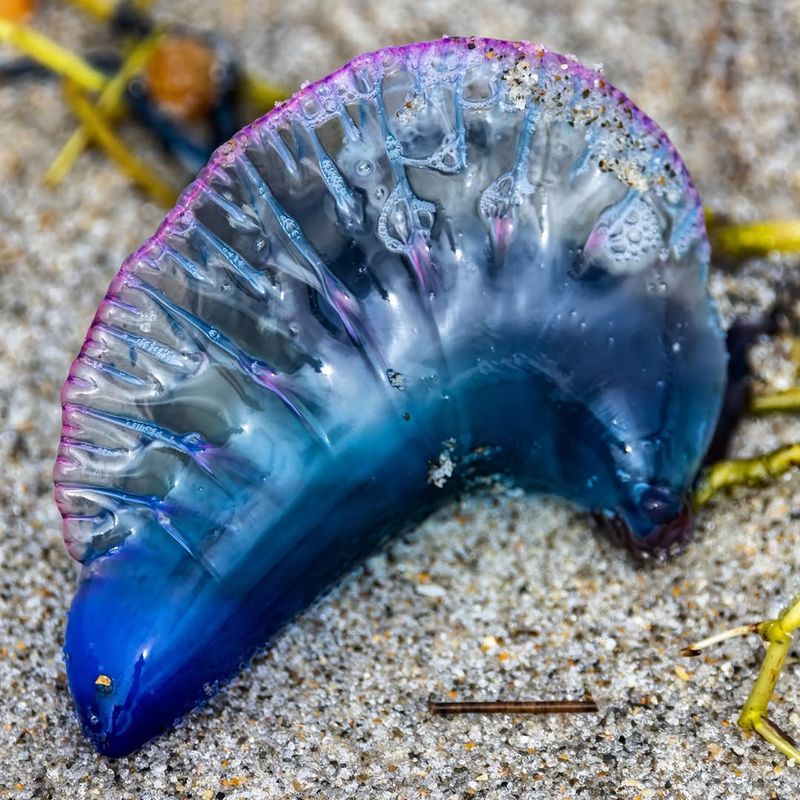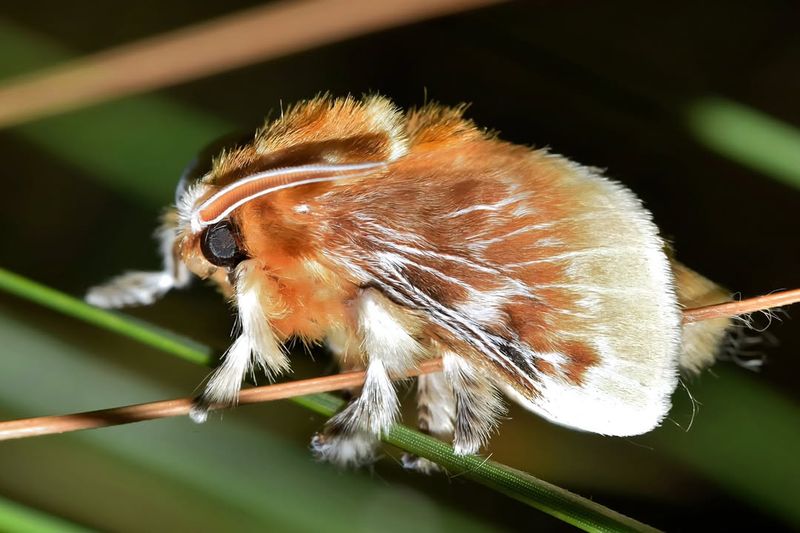Florida’s wild side shows up the moment you step outside, and some creatures deserve extra caution. I’ve spotted a couple near my porch before and immediately checked my surroundings.
These animals blend in better than you’d expect. A quick heads-up helps you enjoy your yard without any unwanted excitement.
1. Eastern Diamondback Rattlesnake
Florida’s largest venomous snake can grow over six feet long and packs a serious bite. Recognizing the diamond-shaped patterns along its back and hearing that unmistakable rattle sound gives you fair warning to back away slowly.
Homeowners in rural areas or near wooded lots should watch for these snakes sunbathing on warm pavement or hiding under porches. Keep your grass trimmed short and remove brush piles where they might take shelter.
If you spot one around your property, call a professional wildlife removal service instead of trying to handle it yourself.
2. Southern Copperhead
With a copper-colored head and hourglass patterns, this snake blends perfectly into leaf litter across Florida landscapes. Many bites happen because people accidentally step on them while doing yard work or walking at dusk.
Copperheads rarely strike unless provoked, preferring to freeze and rely on camouflage for protection. Wearing boots and using a flashlight during evening activities around your Florida home reduces encounter risks significantly.
Their venom causes painful swelling but is rarely life-threatening to healthy adults when medical treatment is promptly received.
3. Cottonmouth Water Moccasin
Found near ponds, lakes, and drainage ditches throughout Florida, this semi-aquatic snake displays a startling white mouth when threatened. Cottonmouths have thick, dark bodies and often swim with their heads above water, unlike harmless water snakes.
Florida residents near water should exercise caution when fishing or maintaining pond edges. Unlike many snakes that flee, cottonmouths sometimes hold their ground and defend their territory aggressively.
Keep vegetation trimmed around water features and teach children to observe all snakes from a safe distance.
4. Coral Snake
Remember the rhyme: red touches yellow, kills a fellow. Florida’s coral snakes sport brilliant bands of color but possess extremely potent neurotoxic venom that affects the nervous system.
Fortunately, these shy, secretive snakes spend most of their time underground or hidden beneath debris. Bites are rare because of their reclusive nature and small mouths that struggle to bite anything larger than a finger.
When gardening or moving logs in your Florida yard, always wear thick gloves and watch where you place your hands.
5. Southern Black Widow Spider
That shiny black spider with the red hourglass underneath her belly is one Florida homeowner should recognize immediately. Female black widows build messy, irregular webs in dark corners of garages, sheds, and outdoor furniture.
Males and juveniles pose little threat, but a mature female’s bite delivers neurotoxic venom causing severe muscle cramps and pain. Check before reaching into storage boxes, putting on gardening gloves, or moving firewood stacks around your Florida property.
Most bites occur when the spider feels trapped against human skin.
6. Brown Recluse Spider
Spotting the violin-shaped mark on its back helps identify this secretive spider found occasionally in Florida homes. Brown recluses hide in undisturbed areas like closets, attics, and behind stored items where they hunt at night.
Their venom causes tissue death around the bite site, creating wounds that heal slowly and sometimes require medical intervention. Shake out shoes and clothing that have been sitting unused, especially in Florida’s humid climate where spiders seek shelter.
Reducing clutter and sealing cracks prevents these spiders from settling in.
7. Bark Scorpion
Florida’s most common scorpion species glows bright blue-green under ultraviolet light, making nighttime detection easier for concerned homeowners. These nocturnal hunters hide under rocks, logs, and inside shoes during daylight hours.
While their sting causes sharp pain similar to a bee sting, it rarely produces serious complications in healthy adults. Children and elderly individuals may experience stronger reactions requiring medical observation.
Check bedding and shake out towels before use if you live in areas where scorpions have been spotted around your Florida neighborhood.
8. Portuguese Man O’ War
Technically not a jellyfish but a colonial organism, this creature washes onto Florida beaches after storms with tentacles stretching up to 30 feet. The blue, balloon-like float sits above water while venomous tentacles dangle below, delivering excruciating stings.
Even dead specimens on the sand can sting, so never touch them with bare hands. Florida beachgoers should watch for purple flags warning of dangerous marine life and teach children to admire from a distance.
Vinegar and hot water help treat stings until medical care is available.
9. Puss Caterpillar
Looking like a tiny toupee with legs, Florida’s most venomous caterpillar hides toxic spines beneath its soft, furry exterior. Touching one causes immediate, intense burning pain that can last for hours or even days.
Children naturally want to pet these cute-looking caterpillars found on trees and shrubs throughout Florida neighborhoods. Educate your family never to touch hairy caterpillars, no matter how harmless they appear.
Remove them from your property using sticks or tools, never bare hands, especially during spring and fall when populations peak.
10. Fire Ants
Originally from South America, these aggressive invaders have colonized Florida yards with painful consequences for unsuspecting homeowners. Fire ants swarm when their mounds are disturbed, climbing up legs and stinging repeatedly in coordinated attacks.
Each sting injects venom causing burning sensations and pustules that develop within 24 hours. Some Florida residents experience severe allergic reactions requiring immediate emergency treatment.
Treat mounds with approved pesticides and teach children to recognize and avoid the dome-shaped dirt piles that appear after rain throughout your property.

